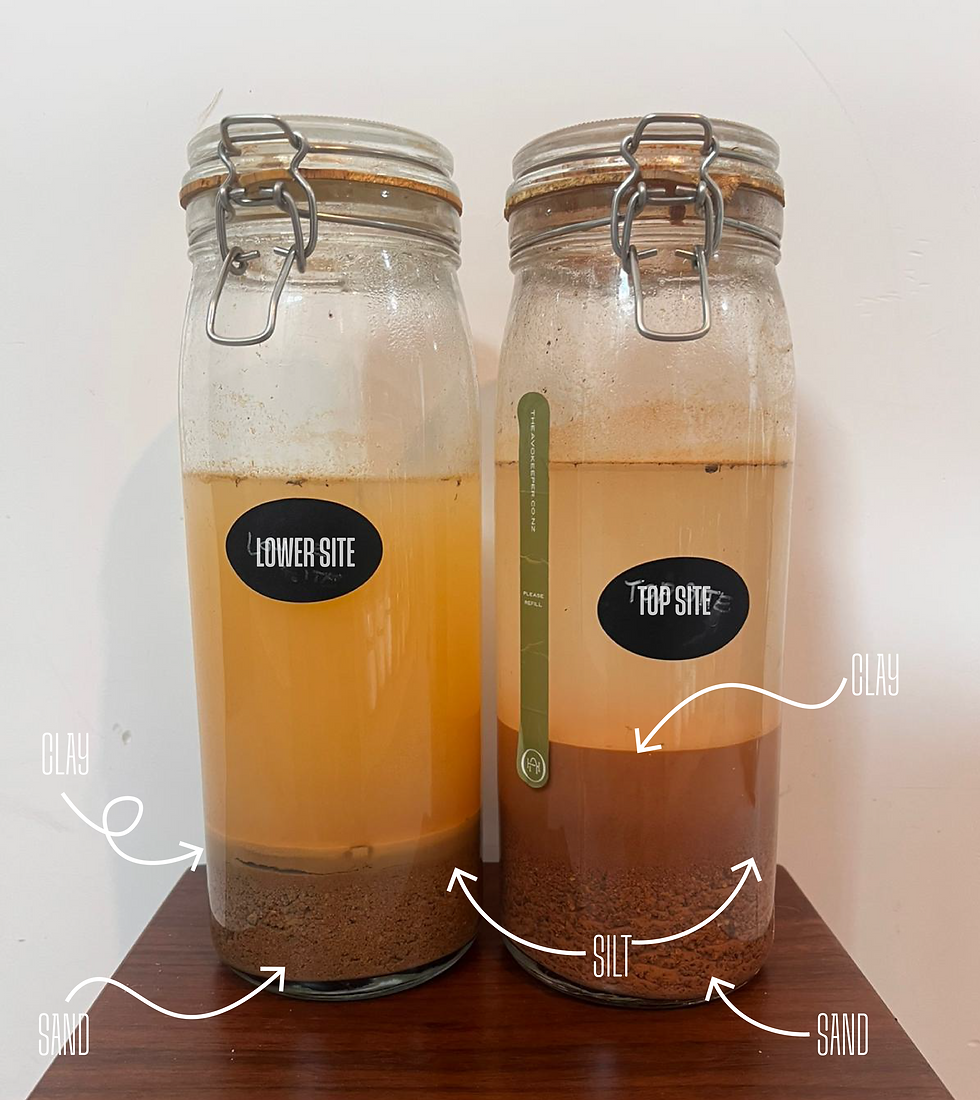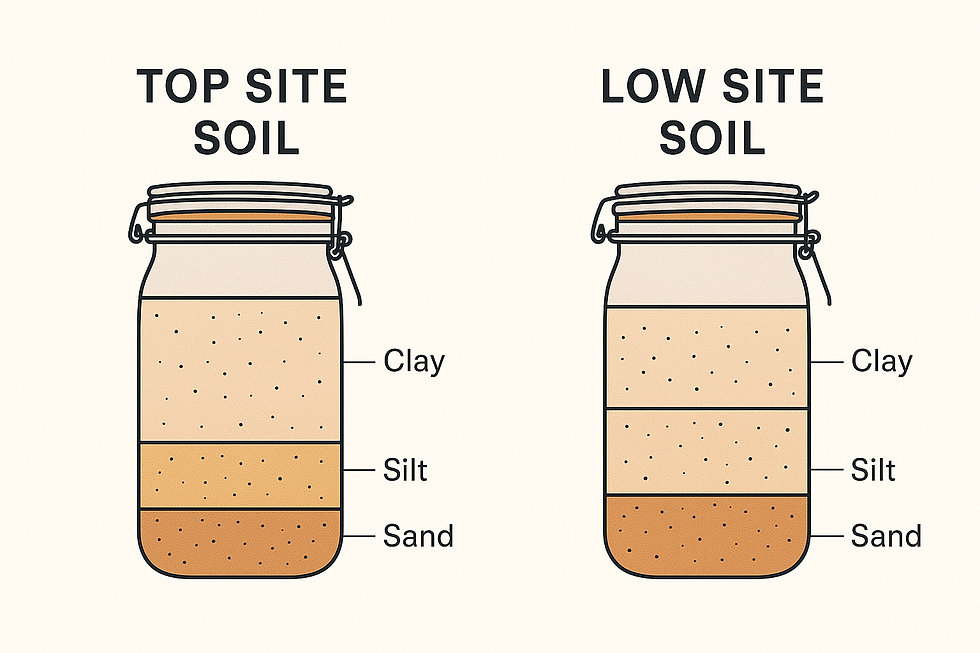Testing the Soil for Adobe Brick Making
- allthingsdesigncre
- Jul 24
- 2 min read

After collecting soil from two different locations on the site — one from the top area, and one from the lower path — we decided to run some basic jar tests to help us understand the composition of each. These tests are a simple and effective way to check how much clay, silt, and sand are present in your soil, and they play a key role in determining whether the earth is suitable for adobe brick making or needs to be adjusted.
We filled jars with each soil sample, topped them up with water, gave them a good shake, and left them to settle overnight. Over time, the soil separates into layers: the heavier sand settles at the bottom, followed by silt, and then clay on top. The thickness of each layer gives us a visual indication of the proportions in each sample.
From our tests:
The Top Site Soil (right jar) showed a thick, fine layer indicating a high clay content. This is great for binding but can lead to cracking if used alone.
The Lower Site Soil (left jar) had a much thinner clay layer and a heavier sand portion, suggesting a sandier soil with less natural binding ability.

What does this mean for our adobe bricks?
For the Top Site Soil, we’ll need to balance the high clay content with extra sand to reduce shrinkage and prevent cracking as the bricks dry. A good starting mix for this would be:
2 parts top site soil
1.5 to 2 parts sand
0.5 to 1 part chopped straw (to add tensile strength and reduce cracking)
For the Lower Site Soil, the opposite is true — it needs more clay to help it bind properly. Since we don’t have access to pure clay, we can blend it with the top site soil:
3 parts low site soil
1 part top site soil or clay
0.5 to 1 part straw

These are just our starting ratios — we'll be making test bricks from both mixtures and letting them dry slowly in the shade to observe how they perform. Cracking, crumbling, or brittleness will guide us to tweak the ratios further.
This kind of testing is a key part of natural building — it helps us understand and work with the materials we have on site, rather than trying to make them fit a rigid formula. It’s not just practical, it’s part of what makes this process so connected to place.
🌱In our next post, we’ll be getting our hands deep into the mud – mixing earth, sand, and straw on site to find just the right blend for strong, beautiful adobe bricks. We’ll share the different combinations we’re testing, what we’re looking for in a good mix, and how we’re preparing for the exciting workshop season ahead.
Post Four: Into the Mud – Earth Mixes, Testing & Messy Joys
Coming soon!
With muddy hands and full hearts,
Alex
Bisque-kit



Comments